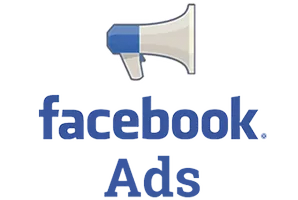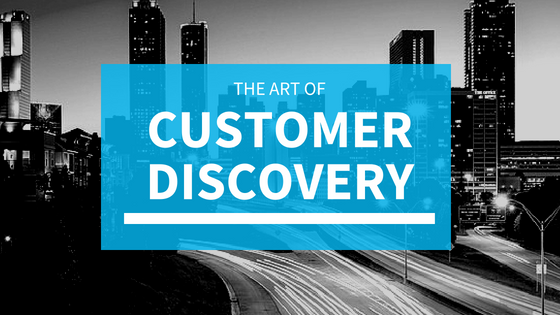
Customer discovery is basically the process of identifying who your first customers are. This doesn’t mean finding a broad consumer group, but really finding out who your visionaries or early adopters or early evangelists are – the ones who are willing or eager to give your product a chance before everybody else. They typically don’t take a lot of convincing because they’re risk takers and are actually looking for what you’re selling.
You can break down the process of customer discovery into documenting your assumptions and turning them into specific hypotheses to test. In other words, this is when you test your main assumption of who is your customer, what problem are you trying to solve for them, and how are they going to buy it from you.
Customer discovery is a key step in the process to building an MVP. Regardless if you’re starting a business or introducing a new service or product to market. Of course you could also be starting a new project. It will allow you to test your waters, and to build relationships with people who are willing to spend their money and who might be great at advocating for your product/brand.
There are two main ways in which you can approach this, one is for you to consider the customer discovery a part of your overall MVP tests, another is to create specific MVP’s for customer discovery. While they’re both great approaches, given the needs of a small or starting business and how things move fast, the first is the better way to go.
Customer discovery as a part of your overall MVP
In this approach there will be four stages to customer discovery. They are:
- Hypotheses: briefly state your hypothesis, or assumptions, which will serve as the base for your testing. For example, Atlanta-based company Our Errands, which provides personal concierge experience for home and business. One of their hypothesis could be that “Our Errands customers are busy small business owners or entrepreneurs who don’t have much time, need to get things done and can’t spend a lot of money with hiring efforts.”
- Hypotheses Test: This is when you’ll look for validation of your hypothesis. To do this, you could interview potential customers or people you believe make up your target audience, create surveys, or make phone calls. It is important to highlight though that this is not a sales pitch, it is simple a discovery phase. Think of it as talking about your ideas with your friends and seeing how they respond and what they have to say.
- Product Concept Test: Once you get a good amount of feedback you should be able to better understand what is the problem you’re solving and who you are solving it for. Next what you need to focus on is testing your product or service idea so you can find out if the solution you’re providing is actually attractive and relevant to the customer. Therefor, this is where you can start pitching your idea to potential customers.
- Feedback evaluation and next steps: At this point you will have run two rounds of tests which will have provided you with information about your customer and your idea itself. Now all you have to do is gather all the data, turn it into information and insights (point of discovery), and decide how you’re going to move forward. Is the problem you are solving an actual problem for your target audience? Are you providing enough value that your customer is willing to go through the decision making process and spend money on your idea? What you find out will determine if you’re moving on the right direction or if you need to take a few steps back and re-evaluate your problem or your target audience.
These four steps form a cycle, which can be simplified in this diagram:
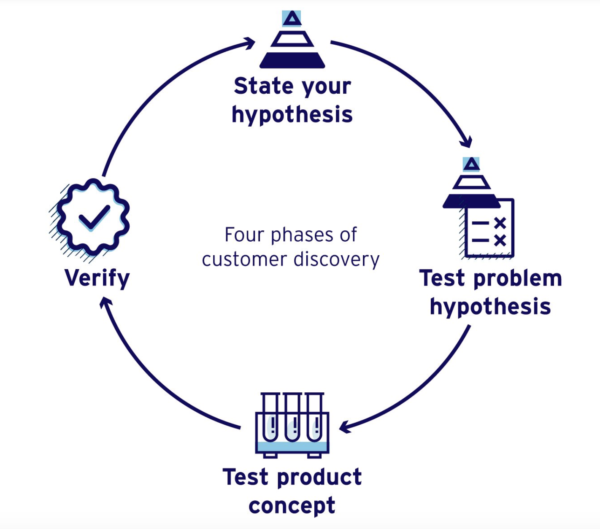
Image: MaRS Discovery District
Once you’re done with it, you’ll have enough information to create a product/service requirements document with all of the characteristics it’ll have to feature in order to attend the consumer’s needs, a sales revenue plan, a design strategy, or even a sales strategy.
The Customer Discovery MVP
This much more detailed approach turns the customer discovery into an MVP itself and it’s ideal for those of you who are building an app or creating an intricate product that asks for more resources and information. What that means is that instead of going straight to testing, you’re actually gonna spend some time thinking about customer personas, different target audiences, and what problems could each persona have that you could be solving. This is also a more design-centered approach, once you’ll really dive deep into testing what value you are providing, what’s the usability of your idea, and how can you grow.
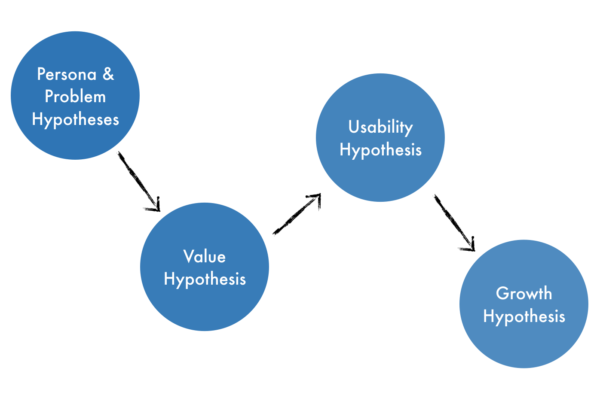
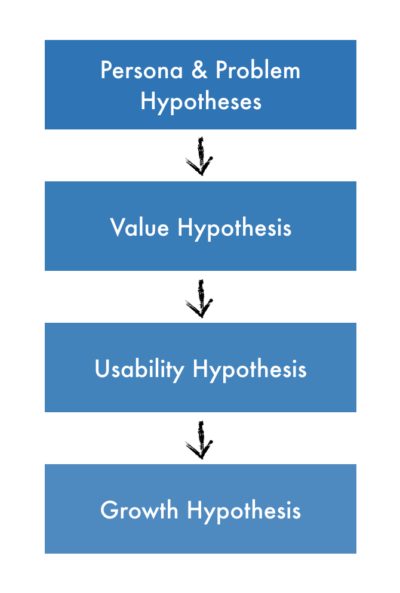
Each step involves a whole new set of tests, because you are really recognizing that you don’t have the knowledge, you only have the assumptions. This approach will use up more of your time and resources, but could also lead to a more significant number of discoveries and ultimately help you create and sell something much more relevant to your consumer.
Alex Cowan goes very in depth into this process in his “Customer Discovery Handbook”, so if this is the approach you believe would work best for you, we highly recommend the read.
There are so many ways in which you could approach customer discovery. Have you gone through this process? How did you do it? Were there any setbacks? Let me know in the comments!


